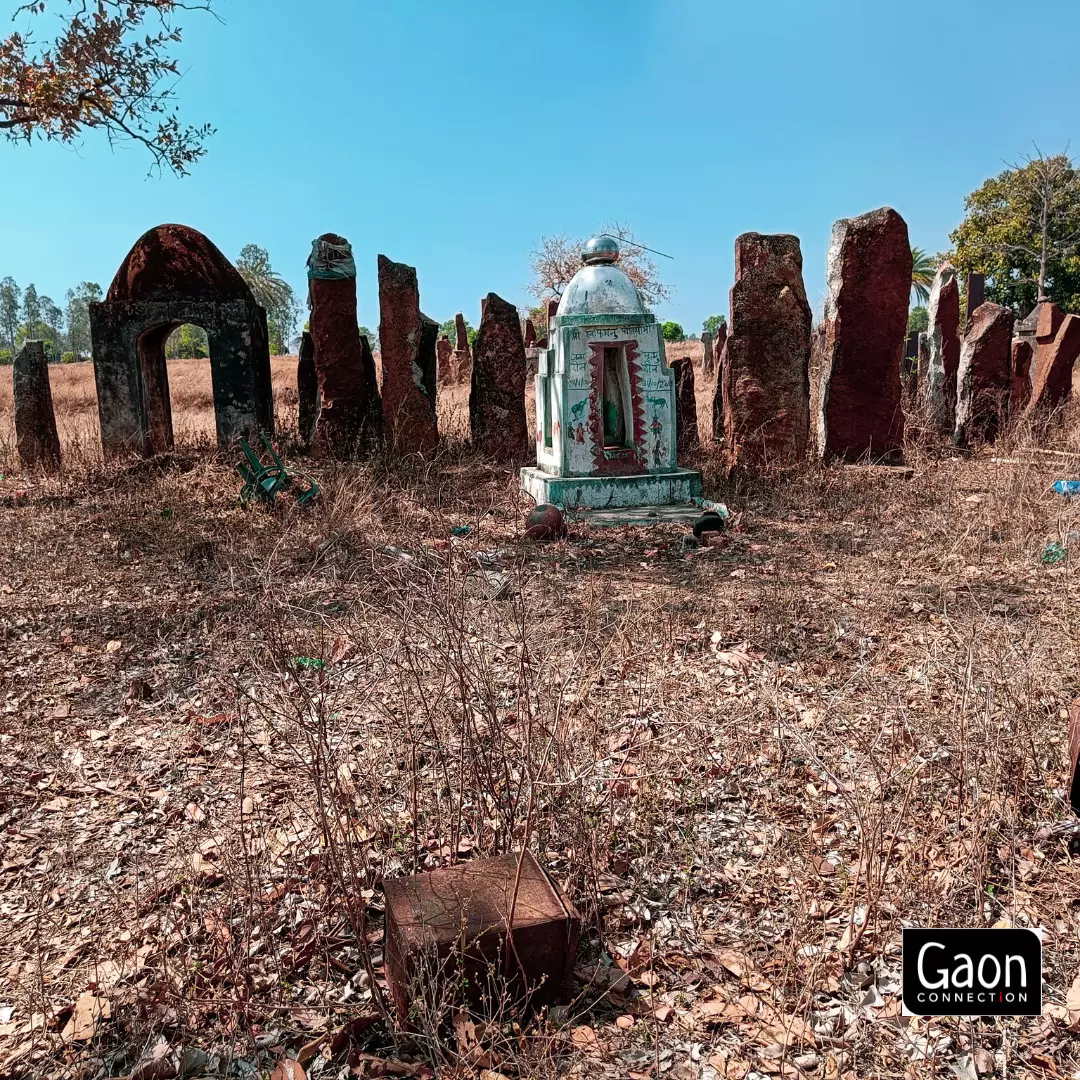The Memory Pillars
Memory pillars are erected on the occasion of the death of a person. It is an age-old tradition going back 3,000 years or more of the Maria and Gond tribes inhabiting Bastar and Dantewada in Chhattisgarh.
 Abhishek Verma 16 Sep 2022 12:28 PM GMT
Abhishek Verma 16 Sep 2022 12:28 PM GMT

The oldest of the lot are large memory pillars in stone believed to have been erected centuries ago. All photos by Abhishek Verma
In Bastar and Dantewada districts, it is not uncommon to see pillars, short and tall. Some are made with wood, some stone and yet others with concrete. They are found by the roadside, deep inside jungles or even in the middle of paddy fields.
These are the memory pillars, erected on the occasion of the death of a person. It is an age-old tradition going back 3,000 years or more of the Maria and Gond tribes inhabiting Bastar and Dantewada in Chhattisgarh.
The pillars are set up ceremoniously on the ninth or tenth day after the death of an individual.
The oldest ones are of stones and many of them have been declared protected monuments under the Ancient Monuments and Archaeological Sites Remains Act, 1958.
Some of them are no more than upright stone slabs with any engravings/ paintings on them having been defaced by time. Still others have recognisable stone carvings of a fish or a bird perched on top. Those that do still retain the painting show musicians and dancers, animals and plants…
Wooden pillars with carvings still stand, though according to tribal inhabitants, because wood decays and has a short shelf- life outdoors at the mercy of weather, they prefer using concrete or stone.
The paintings show the progress of time and some of the newer ones have aeroplanes, trains, modern buildings and so on comfortably sharing space with more traditional tribal motifs. Also, while some have obviously used muted natural colours, the newer pillars use brighter hues.
Many times, the likes and dislikes of the deceased, their hobbies and such are depicted on the memory pillar. Often, photographs of the deceased are also tagged onto the pillars.
Families with means engage the services of special artisans who craft the pillars. The artisans live with the family till the job is done.
Memory pillars built by different tribes in Bastar for the departed.
Earlier most of them were made of wood but it decays outdoors so people prefer stone or even concrete now.
Earlier most of them were made of wood but it decays outdoors so people prefer stone or even concrete now.
Earlier, natural soil colours were used but now brighter blues, oranges and greens can be seen.
Older memory pillars were painted with animals or scenes from daily life while recent ones bear the name, hobbies, personal likes and dislikes,and even photographs of the deceased.
Memory pillars built by different tribes in #Bastar for the departed.
These stone pillars have been declared protected monuments under the Ancient Monuments and Archaeological Sites Remains Act 1958.
To erect memory pillars, special artisans are hired by families.
The pillars are usually set up on the ninth or tenth day post the death.
Memory pillars, which pay tribute to the deceased of the Maria tribe in Bastar, can be found in fields or on the roadsides.
#Bastar #Chhattisgarh #Tribe #Dantewada #Gondtribe Gonde Tribe
More Stories




